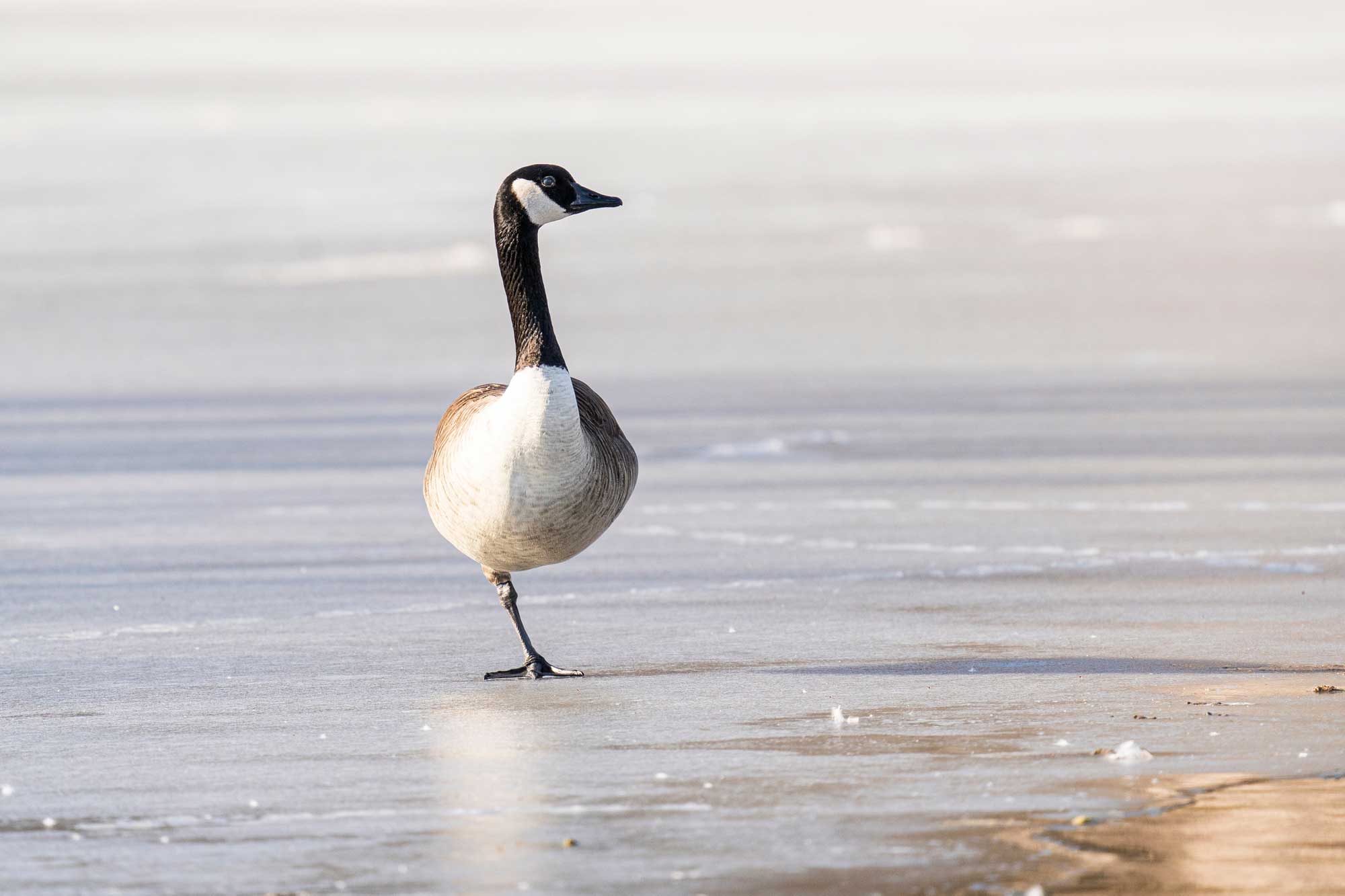Nature curiosity: Why do birds stand on one leg?

Have you even seen a bird standing on one leg and wondered how it was able to maintain its balance and not tip over? The stance is actually quite common in birds, and the reason for it is quite simple.
In many cases, birds stand on one leg because they are cold and keeping one leg tucked up underneath their body helps prevent the loss of body heat, according to the Cornell Lab of Ornithology. A bird's feathers help keep them warm in cold weather, but most birds do not have feathers on their legs and feet. By standing on only one leg, birds reduce their amount of exposed skin by about half.
The one-legged stance is common in long-legged birds like herons as well as ducks, geese, gulls, shorebirds and hawks, according to BirdNote. Many smaller birds, like sparrows, don't need to go one-legged to help them stay warm. Instead, they can fluff up their feathers so they cover both their legs. These birds often tuck their bills into the feathers to help stay warm as well.
Standing on one leg isn't the only way birds can minimize heat loss in cold weather. Their vascular system helps too because of an adaptation called "rete mirabile." The arteries and veins in their legs are arranged close together, which allows the blood to be warmed and cooled quickly as its passes through, according to the Smithsonian.
The warm, oxygenated blood that leaves the heart in their arteries moves toward a bird's feet, passing by the veins that are returning deoxygenated blood back to the heart. As the blood in the arteries passes the cooler blood in the veins, the warmth from the arterial blood increases the temperature of the blood returning in the veins, according to Popular Science.
The heat exchange doesn't just warm the blood in the veins. It also cools the blood in the arteries. As the blood passes through the veins and arteries, the cooler blood in the veins lowers the temperature of the arterial blood, BirdNote reports. This may not seem ideal, but lowering the temperature of the blood in the arteries brings it closer to the environmental temperature, which means the birds won't lose as much heat through their legs than they would if they were at body temperature.
This heat exchange isn't just used by birds. Squirrels and other mammals that spend time in the snow also keep warm this way. And the science behind it is the same as how fish exchange oxygen in their gills, Popular Science reports.
Without a doubt, the birds most famous for standing on one leg are flamingos. If you see a flock of flamingos, there's a good chance at least some of them will be standing on one leg, with the other tucked up underneath their body. This is true even in warmer climates, where conserving body heat isn't as vital as it is in cold weather. So why do they do it? Researchers aren't exactly sure, according to the San Diego Zoo. It's true that this stance does help them prevent heat loss, but researchers theorize standing on one leg may simply be more comfortable for the long-legged birds.
